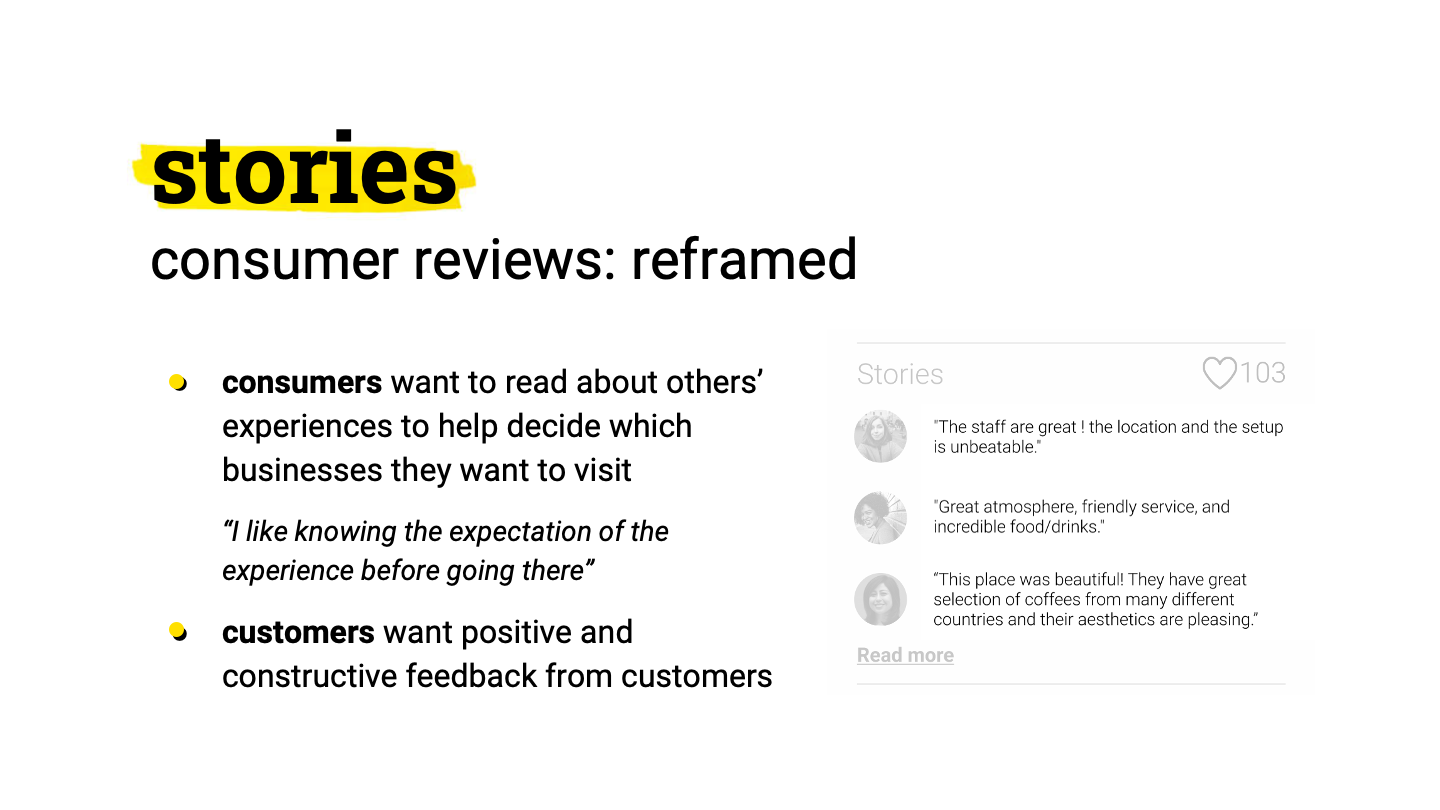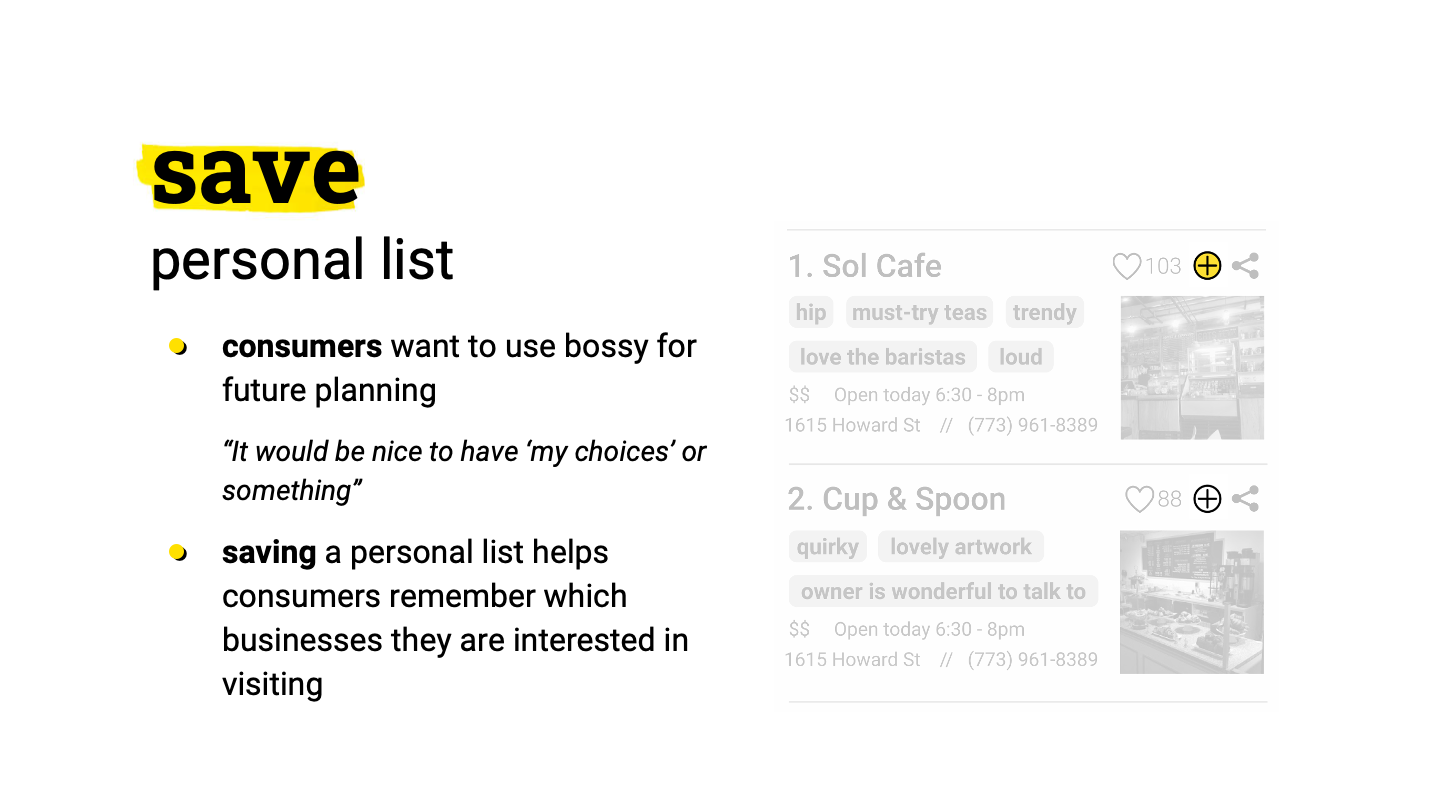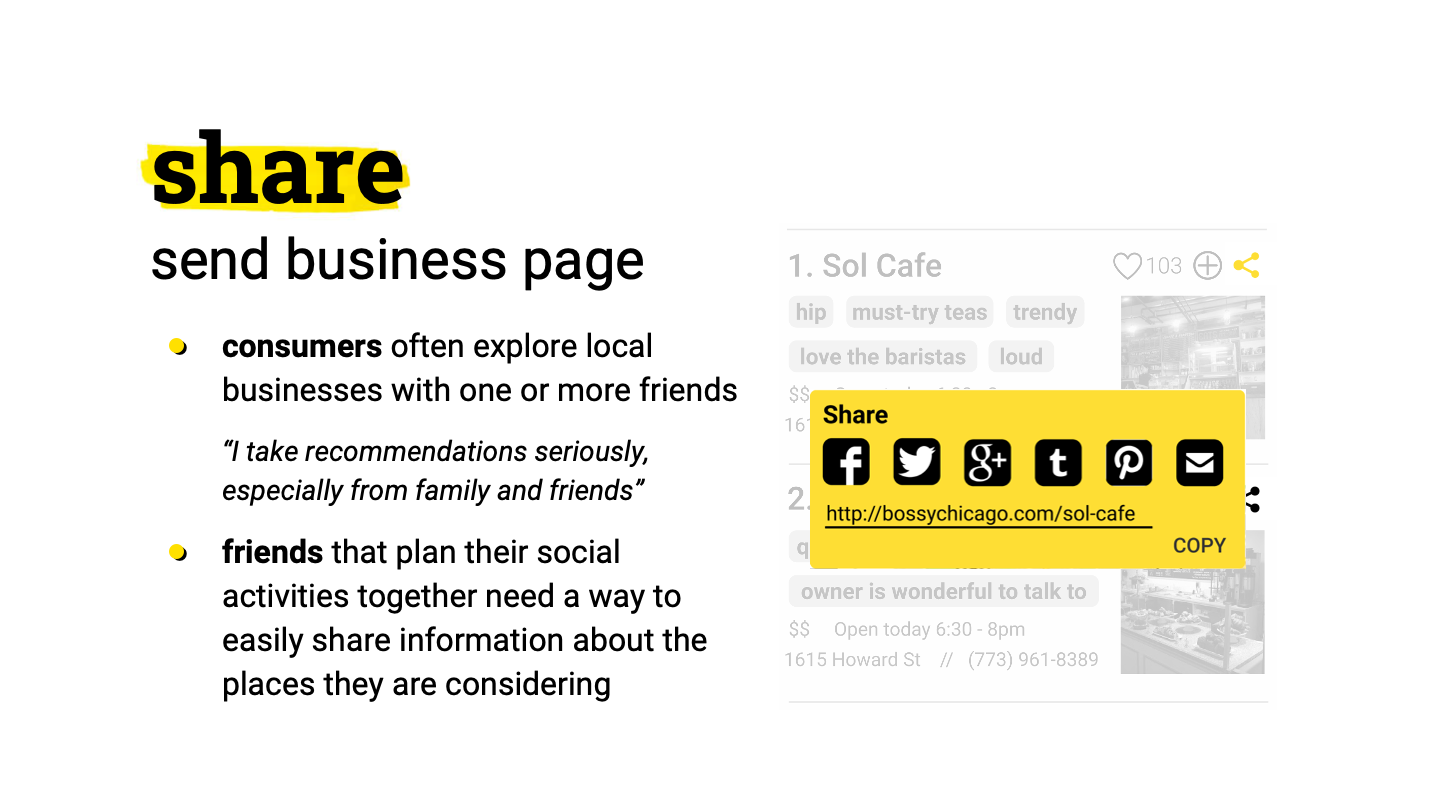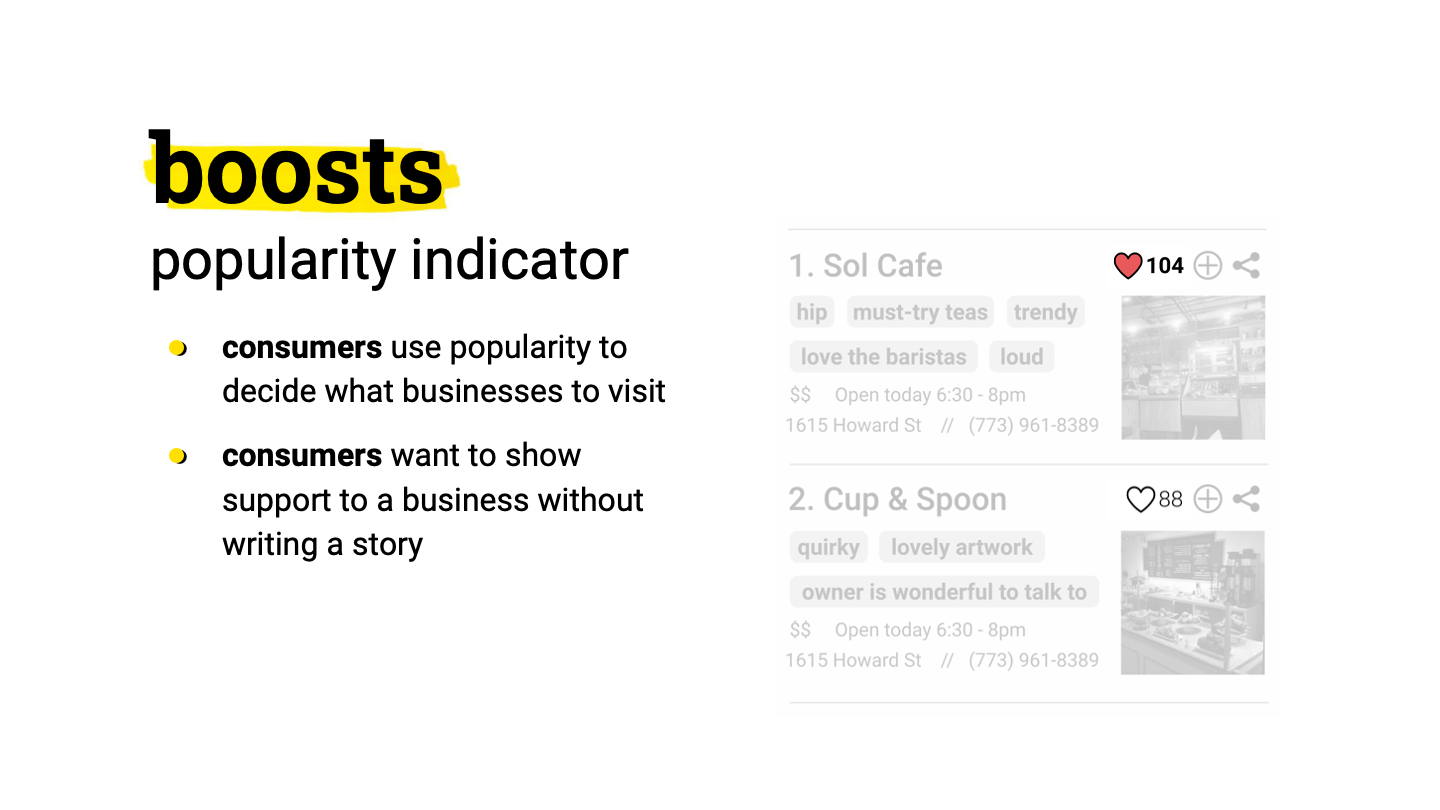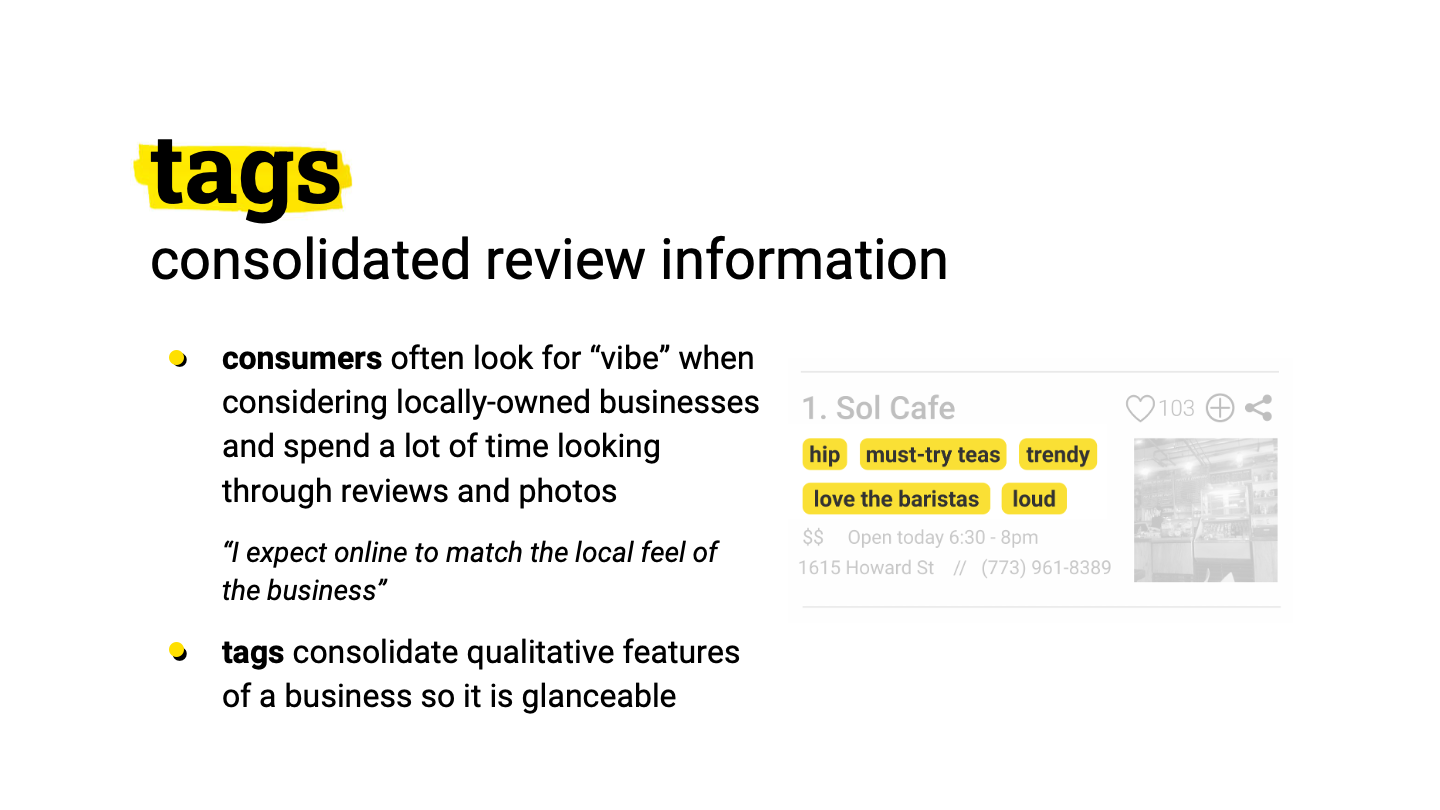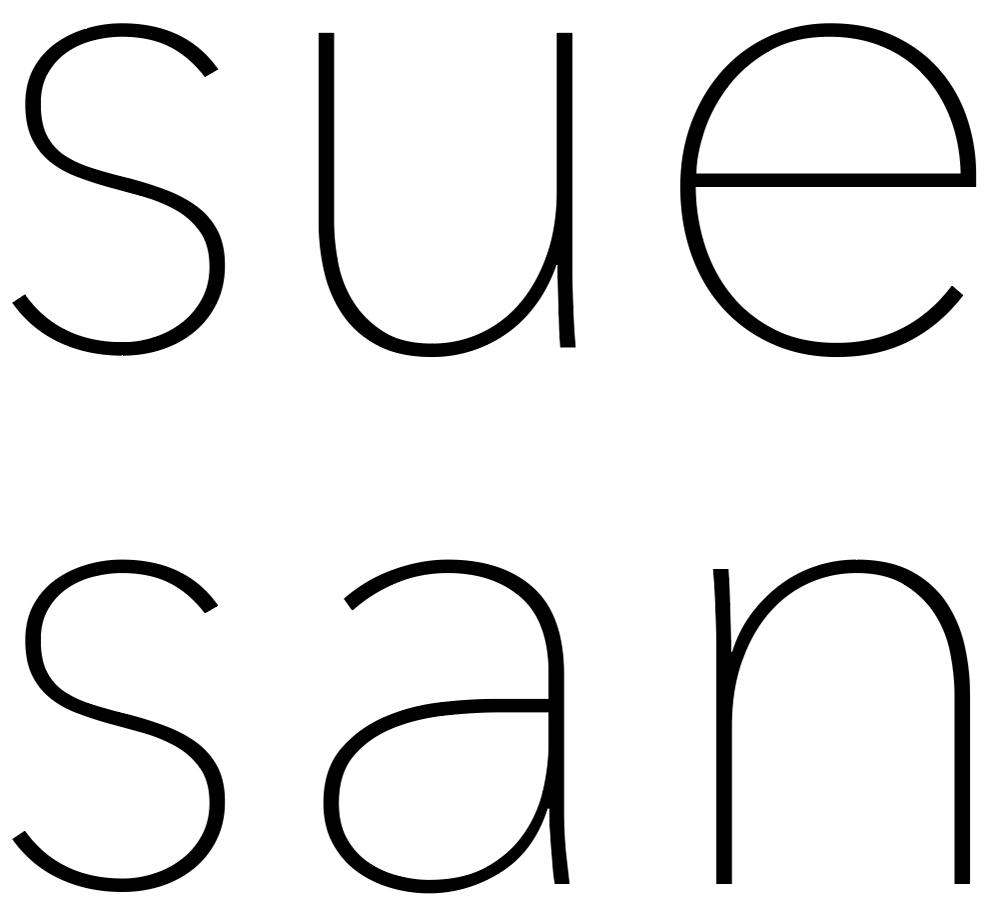A WEB PLATFORM CONNECTING WOMEN CONSUMERS TO WOMEN-OWNED BUSINESSES
Women control over 80% of consumer spending in the United States, but women-owned businesses make up only 4% of the country’s business revenue, and this number hasn’t budged in over 20 years.
Money is power: Bossy is helping consumers shift their spending to support women and non-binary small business owners, so they have just as much power in business as men do.
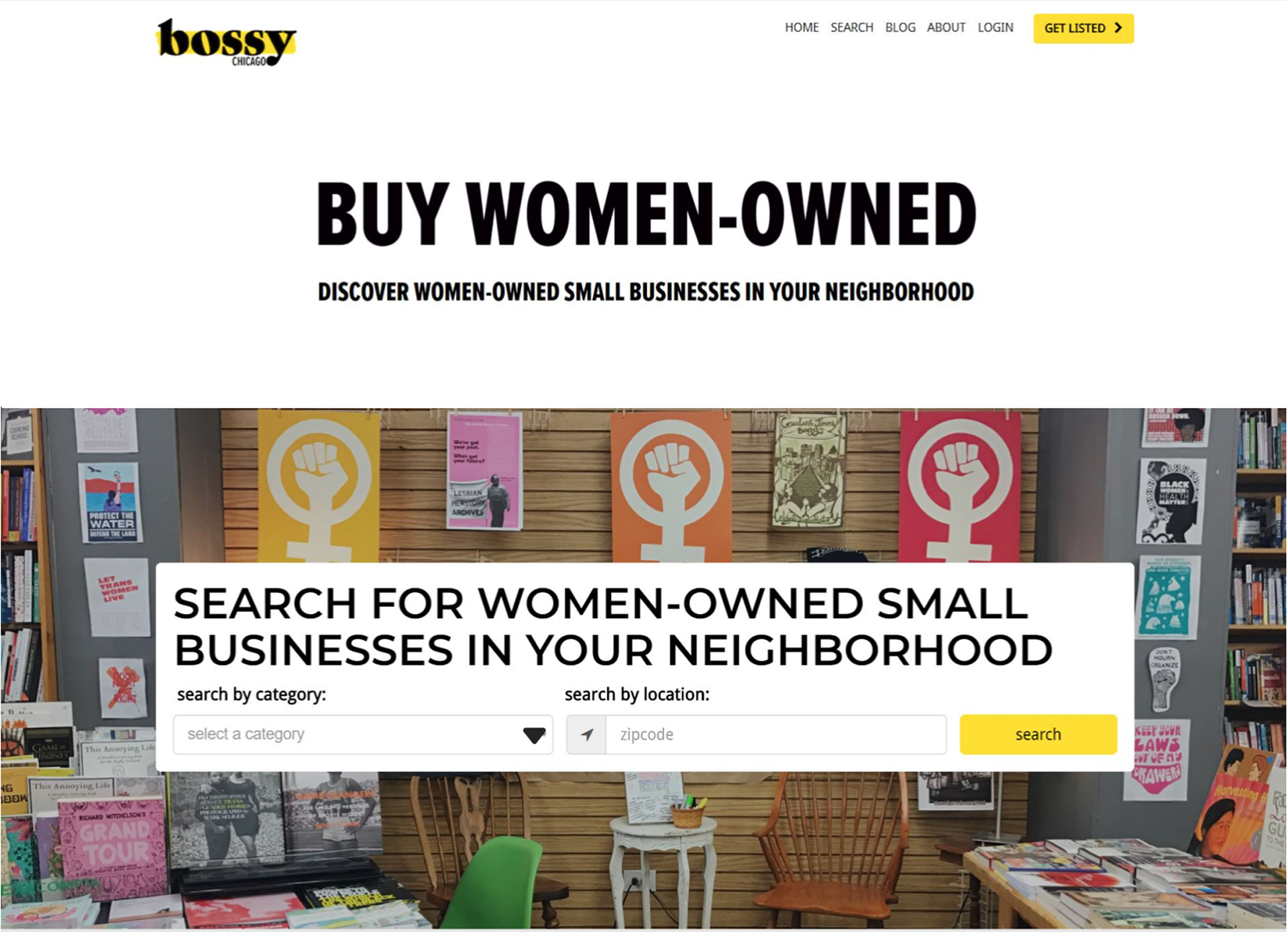
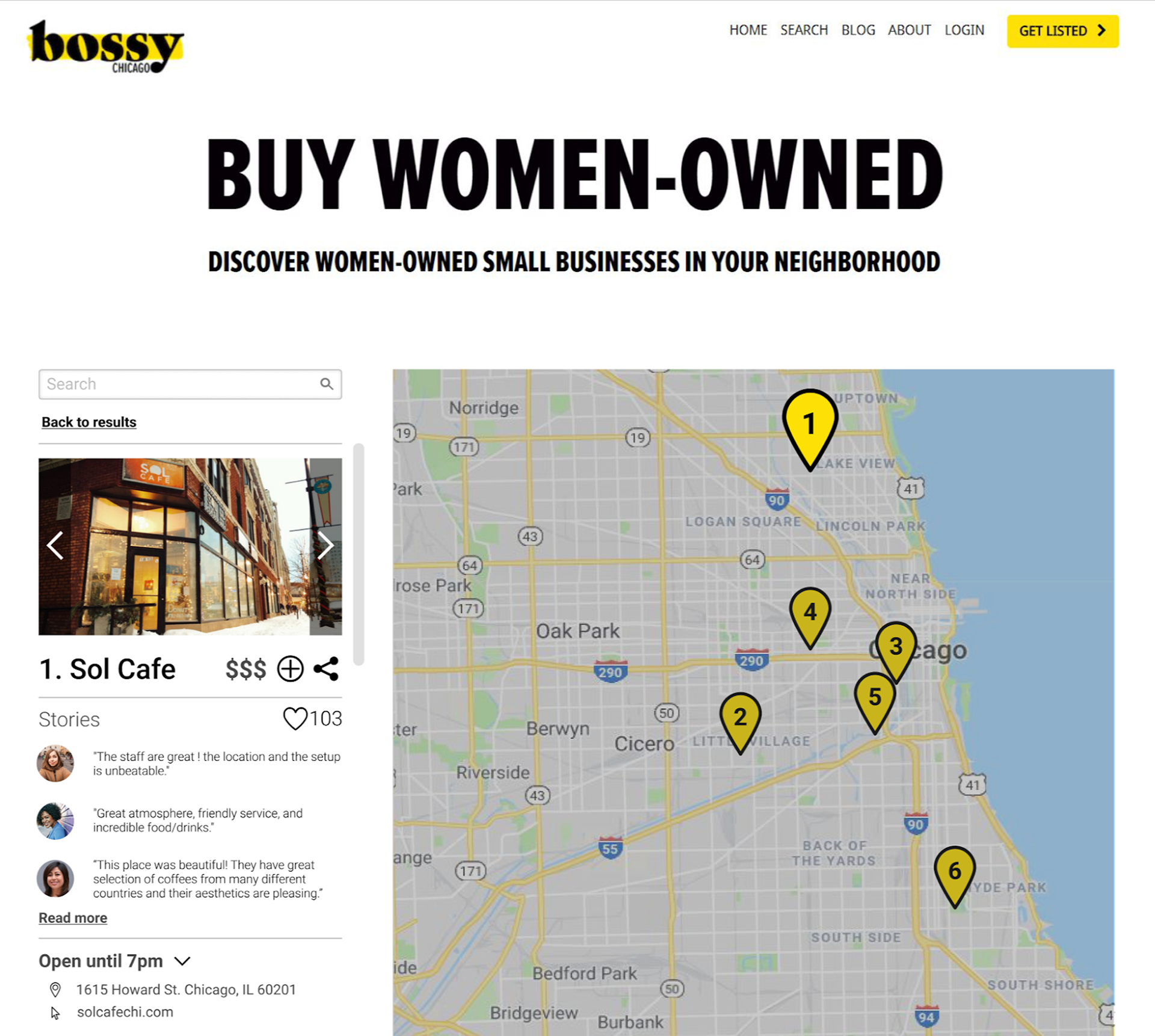

my role
Lydia Davison, Umur Gokcek, David Jacob and I worked together to redesign Bossy's website using human-centered design principles and an agile project management framework.
I planned and conducted in-context stakeholder interviews, created paper prototypes and wireframes, performed generative and evaluative usability testing, managed design sprints, and presented the final design to Bossy stakeholders.
deliverables
• Research insights and opportunity areas
• Concept wireframes
• High-fidelity, interactive prototypes
• Visual presentation
• Concept wireframes
• High-fidelity, interactive prototypes
• Visual presentation
skills
• Sprint planning
• Survey design
• Contextual interviews
• Design research and synthesis
• Wireframing and prototyping
• Usability testing
• Visual storytelling
• Survey design
• Contextual interviews
• Design research and synthesis
• Wireframing and prototyping
• Usability testing
• Visual storytelling
sprint 1: research
We started by understanding how Bossy was already serving their customers (small-business owners) and consumers (shoppers at those businesses).
EXISTING CUSTOMER OFFERINGS
Business membership: women business owners can connect to each other through Bossy's online community
Business marketing: Instagram, blog posts, and video interviews share the story's of Bossy business owners
Online directory database: participating businesses create profiles that are included in the consumer-facing directory
EXISTING CONSUMER OFFERINGS
Searchable directory: consumers can search for local women-owned businesses and filter through a list by distance
Mission statement: the Bossy team highlights the importance of shopping women and minority-owned businesses
Email newsletter: consumers can sign up for a period email newsletter that shares Bossy blog posts
sprint 2: user interviews
We then spoke with both Bossy customers and consumers at Bossy storefronts to have conversations around business needs, shopping habits, and what motivates them to support causes they care about.
Key business owner research questions
• What support or resources do minority-owned businesses need?
• What do business owners expect from an organization like Bossy?
• How do Bossy member business owners feel about the existing experience?
Key consumer research questions
• Why and how do consumers support issues that they care about?
• How do consumers decide where to shop?
• What information do consumers want to know about a locally-owned business?
pain points & tensions
Bossy businesses serve local markets and niche interests - owners want Bossy to help them reach a wider audience. They are highly skilled in their area of expertise, but many Bossy entrepreneurs want more resources to improve their business acumen.
Consumers appreciate the mission of Bossy, but struggle with using the site in their day-to-day due to lack of information on the metrics they normally use to determine where to shop, like reviews and hours.
sprint 3: prototyping and testing
Bossy shoppers, like most consumers, prioritize buying what best meets their needs. Though they want to support local, women-owned businesses, they want to ensure that they are still making high quality purchases. In order to help consumers integrate shopping at Bossy businesses into their routines, we tested paper prototypes of three concepts that:
• Mirrored the navigational styles of analogous, familiar services (like Google and Yelp)
• Provided more information regarding the quality and experiences at Bossy businesses
• Limited the number of sites/apps that must be visited to select a business to visit
• Provided more information regarding the quality and experiences at Bossy businesses
• Limited the number of sites/apps that must be visited to select a business to visit
MOBILE
An in-the-moment shopping tool to accommodate decision-making on the go and provide real-time information on the impact of supporting Bossy businesses.
PLUG-IN
Since consumers already use services like Amazon and Yelp, a plug-in supports existing shopping routines while allowing users to quickly compare the products of Bossy businesses to similar ones online.
WEBSITE
A solution highlights the visual brand of Bossy businesses and accommodates planned-ahead shopping trips with detailed information about product and service offerings.
After testing concepts with users and receiving feedback from Bossy business owners, we learned that the most desired use case is a website that consumers can use to plan a route for shopping or running errands. We found that users did not want to download yet another mobile app specifically for identifying women-owned businesses. Though consumers liked the functionality of the plug-in, it did not provide enough support for service businesses or those without online purchase capabilities.
sprint 4: usability testing
In redesigning the Bossy website, we created a range of mock-ups - from low-fidelity sketches to high-fidelity prototypes - to test a number of characteristics. To better understand consumers' process for deciding what businesses to visit, we used situational task analysis to assess different features and layouts.
sprint 5: visual design
